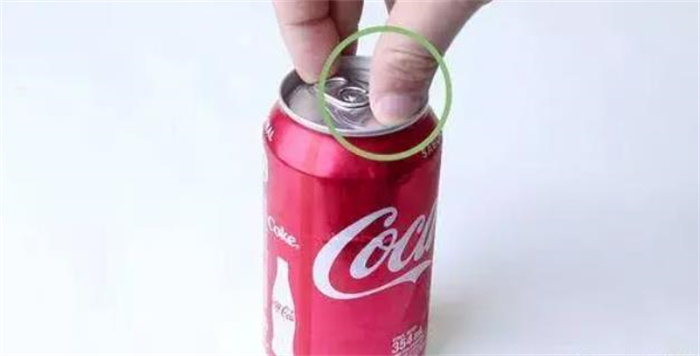How Can A Thin Can Withstand So Much Pressure?
How Can A Thin Can Withstand So Much Pressure?
Whenever you open a can of Coke or beer, you may think of a strange question: How did this thin can withstand so much pressure? Imagine that they may have undergone a stress test of up to 90 pounds before selling.
This is not only amazing but also curious: what exactly makes these weak cans unwavering to withstand the force of an entire atmosphere? Is it the power of metal? Is it the secret of design? Or the charm of chemistry? In this article, we will uncover the mysteries of cans in the design, manufacturing, and testing phases, and take you into this amazing world of food packaging.
Cans Strength Analysis
As the mainstream of modern food packaging, cans have become an indispensable part of people's lives. However, during use, sometimes the strength of the can is insufficient, resulting in the deformation or rupture of the can during transportation or storage. Therefore, it is important to perform a can strength analysis.
In general, the strength of a can depends on its material as well as the manufacturing process. Modern popular aluminum cans are light material, high strength, recyclability, simple production process, low cost, and other characteristics, making them one of the main food packaging.
Since the forming of aluminum cans are formed by stretching, the strength of cans and the forming process are closely related.
The strength and stability of the can are mainly determined by the following four aspects: the thickness of the can body, the tightness of the can lid, the air pressure in the can, and the external physical influence. Any one of these factors can lead to insufficient strength of the can.
The thickness of the can's body has a great influence on the strength of the can. Therefore, in the selection and manufacturing process of can materials, it is necessary to ensure that the wall thickness of the can meet the design requirements. Insufficient wall thickness will lead to insufficient strength of cans, which are prone to deformation or cracking during transportation or storage.
The sealing performance of cans is also an important factor in the strength of cans. The sealing performance of the can lid determines the air pressure in the can. During transportation and storage, if the can lid is not sealed, the pressure in the can will continue to drop, and the can may be deformed under the action of external pressure.
The air pressure in a can is one of the key factors that determine the strength of a can. Too high or too low pressure in the can will cause a change in the strength of the can. Therefore, when adding gas to a can, it must be ensured that the pressure of the gas is within a safe range.
External physical influences may also affect the strength of the can. During transportation and storage, cans may be affected by crushing, impact, or other external factors that can cause the cans to be under-strengthened.
When cans are transported and stored, necessary protective measures should be taken, such as strengthening packaging, cushioning materials, etc.
Cans Internal Pressure Analysis
Cans are one of the most common commodity packaging in our lives, it is not only convenient to carry but also easy to use. However, the pressure that exists within it is one of the problems that we do not pay much attention to.
The pressure inside the can come from the enclosed air and liquid. We know that air molecules are constantly moving inside the container, colliding with each other and hitting the container wall, resulting in a certain pressure. When we open the can, the pressure in the gas and liquid is released instantaneously, making a "hissing" sound, which indicates that there is a certain pressure in the container.
The internal pressure of the can is also derived from thermodynamic effects. When the temperature inside the can is raised, the molecular velocity of the liquid or gas will increase, increasing the internal pressure. Conversely, when the internal temperature drops, the internal pressure also decreases.
Under normal circumstances, we do not need to pay special attention to the internal pressure of the cans when using them. However, if the cans are damaged during transport or storage, the internal pressure will spiral out of control. Damaged cans can cause leakage of liquids and gases inside, leading to undesirable consequences or dangerous events.
To avoid this situation, product manufacturers should take effective measures during the production process to ensure that cans can withstand internal pressure correctly. This includes strengthening the material and design structure of the can and filling the container with the right amount of gas to control the pressure inside the can.
Cans Production Process Control
Cans are a very common beverage packaging, which has the advantages of convenience, hygiene, and safety, and has been widely used in the packaging of various beverages. However, what many people don't know is that the production process of cans is a very complex process that requires strict process control and quality control.
The production of cans requires a large amount of aluminum alloy materials, so the quality of the material is crucial to the quality of the final product. In the procurement process of materials, it is necessary to strictly control the specifications and quality of materials, and carry out corresponding testing and testing to ensure the excellent quality of the final product.
The production process of cans includes disc molding, internal coating, external coating, assembly, inspection, and other links. In these steps, detailed process control and quality monitoring are required. For example, in the process of disc forming, it is necessary to pass a certain cold-pressing mold and heating device to deform the aluminum alloy material into a disc that is easy to process.
In the process of internal and external coating, grasp the correctness of the coating process and process parameters to ensure the good quality and appearance of the coating layer. In the assembly process of cans, the operation of machinery and equipment should be finely and standardized controlled to ensure the tightness and stability of cans.
The manufacturer of cans should also pay attention to environmental protection issues, especially in the coating process, and strictly control the emission of undesirable substances. At the same time, to avoid adverse reactions or deviations in the production process, it is necessary to strengthen quality control through data sharing, system monitoring, and other means to ensure that the production process is efficient, stable, and reliable.
Although cans can withstand such pressure and weight, we should still pay attention to use and recycle. Random throwing of cans will not only cause pollution to the environment but also cause harm to animals and plants. Therefore, I hope that everyone can use and recycle the cans correctly, so that they can play a greater use value, and at the same time protect our beautiful earth.







